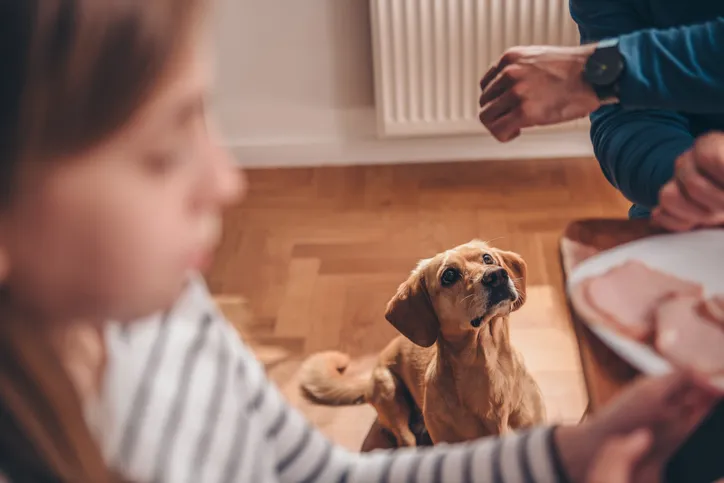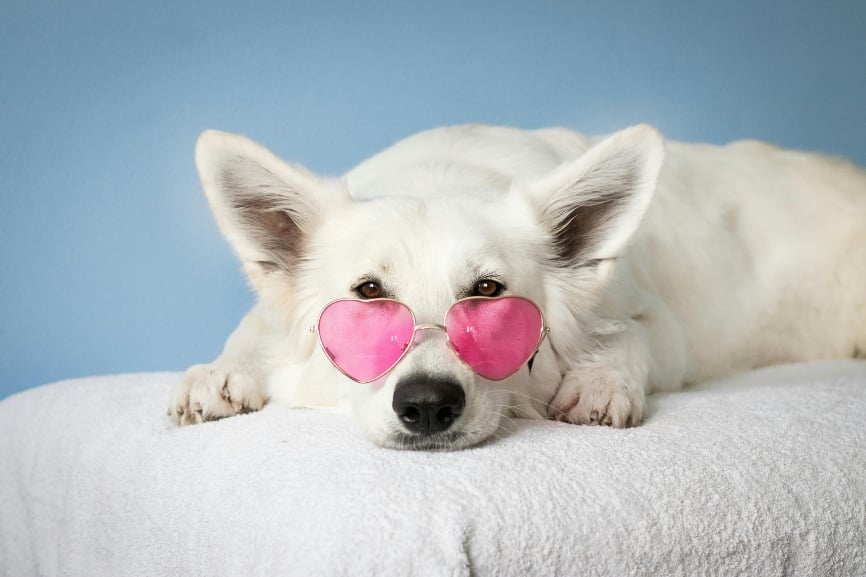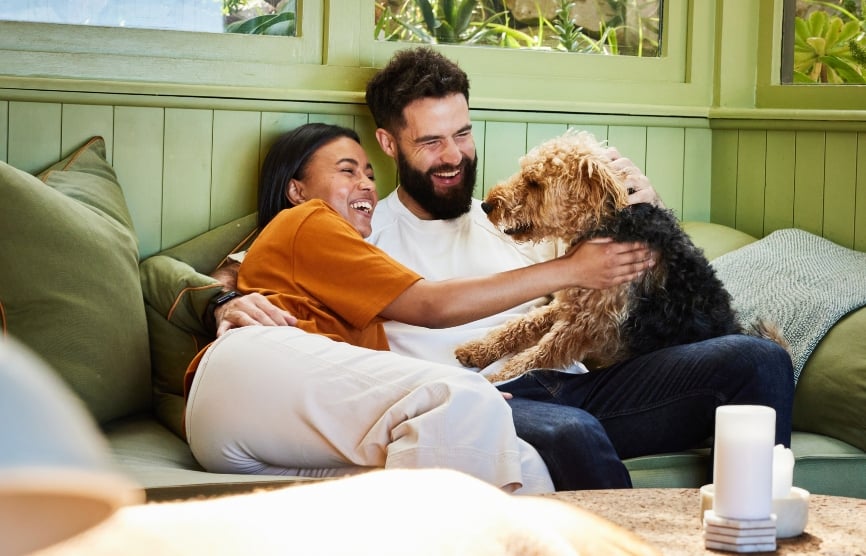Mealtime is a time for pet parents to show their pets some love. Our pets, who intently watch our body language, know precisely when it’s time to eat and wait eagerly, and sometimes impatiently, for us to fill their food bowl with something delicious.
Just when we think all is well at mealtime, though, we hear a malicious growl or see bared teeth as warnings to back away from the food bowl. What just happened?
To put the hurt feelings aside for a moment, food guarding is normal behavior in animals. Wild and stray animals, whose meals are far from guaranteed, fiercely guard their food from would-be food moochers. Our pets, who live the comfortable domesticated life, typically do not need to defend their food turf. Thus, food guarding and food aggression can become very problematic for pet parents.
First, let’s take a quick review of food aggression in pets.
What is Food Aggression?
Food aggression is often fostered in puppyhood as food competition between littermates. Feeding puppies from a food trough creates a rough and tumble, free-for-all feeding environment. The more dominant puppies will bully the less dominant puppies and aggressively guard the prime spots at the trough. This competitive feeding environment teaches puppies, especially the less dominant ones, to aggressively guard their food. Such behavior may persist well after puppyhood, potentially creating big problems at mealtime with their new pet parents.
Interestingly, genetics can also play a role in food aggression.
Food aggression, which can range from mild to severe, can be directed toward people or other pets. Regardless of the target, food aggression in dogs is evident by the following behaviors at mealtime:
- Lunging
- Freezing
- Growling
- Stiff body posture
- Snarling with bared teeth
- Snapping or biting if mealtime is interrupted
- Eating faster when a person approaches the food bowl
Pay close attention to your dog at mealtime to determine whether he is demonstrating food aggression.
Stopping Food Aggression
If your dog is demonstrating food aggression, first take him to your veterinarian, who can determine whether the aggression is behavioral or medical (e.g., systemic illness). If the aggression is behavioral, the advice below can help you address this bad behavior.
Avoidance
Fortunately, not all cases of food aggression require treatment. Sometimes, avoidance is the best solution: create a home environment in which your dog can peacefully eat by himself. If you choose this option, provide food only at mealtime. Free-choice feeding can lead to continual food guarding.
Treat-tossing
If the avoidance strategy does not appeal to you, try the treat-tossing method. To do this, stand safely back from your dog at mealtime and toss a few dozen bite-sized treats into his food bowl while he’s eating. When his food bowl is empty, step a bit closer to the bowl and continue tossing in treats. Repeat this process each day, moving a little closer to the food bowl to toss in the treats. Each time you move closer, watch for signs of food aggression as an indication that you’re too close.
Continue this process until your dog remains relaxed as you move closer to his bowl. If you’re not sure what ‘relaxed’ looks like, observe your dog when he is enjoying relaxing activities, such as lounging around the house or receiving a gentle tummy rub.
Practice this method with each household member to ensure that your dog is not food aggressive toward anyone in the house. Also, to prevent overfeeding, reduce the amount of his regular food to account for the extra calories from the treats.
If avoidance or the treat-tossing method do not stop your dog’s food aggression, more advanced solutions are available. Contact your veterinarian or a veterinary behaviorist to learn about these advanced training methods.
Training Don’ts
Do not punish your dog. Punishment will only amplify the food aggression. Also, avoid showing your dog who’s boss. Doing so may lead to a temporary truce but will do nothing to resolve the food aggression. Instead, you will damage your relationship with your dog and worsen the aggression.
Bringing it Together
Food aggression is undesirable behavior in our pets. Fortunately, with time and patience, it can be either managed with avoidance or eliminated with training. If you are having trouble with your dog’s food aggression, reach out to your veterinarian or a veterinary behaviorist for more guidance.
Content provided by JoAnna Pendergrass, DVM. Dr. Pendergrass is owner and founder of JPen Communications, a medical communications company specializing in consumer education.
If you love your pets like family, you want to protect them like family. By enrolling in pet insurance, you can save up to 90% on vet bills which means saying “yes” to life-saving treatments, no matter the cost. If you’re not a part of our pack, start by getting a free quote.








